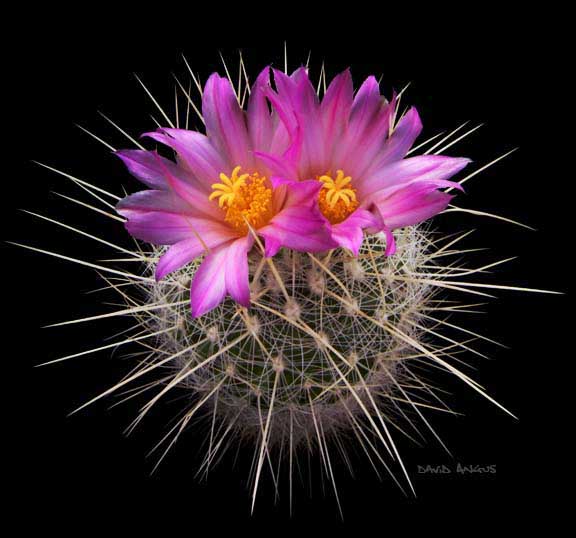
Photograph courtesy of David Angus
Growth Habits: This globular cactus can in time grow several heads and attains a height and diameter of approximately 4in. (10cm.) The ribs are indistinct and the tubercles are conical. The areoles are predominantly white and have many white radial spines, usually between 15 and 25 and the central spines vary between 2 and 4.
Scientific name: Thelocactus macdowelii
Common names: Glory of Texas, Straw Spine Cactus, Texas Pride
Synonym: Echinocactus macdowelii, Thelocactus conothelos var. macdowellii, Neolloydia macdowelii, Echinomastus macdowelii, Thelocactus macdowellii
Etymology: Thelo is the Greek word for nipple, which refers to the tubercles common in this Genus.
Origin: Mexico (Nuevo León, Coahuila)
Light: This plants likes the sun and will stand as much as you can give it, as long as there is good air circulation.
Compost: I think we all get the general idea of a good compost by now, but this plant will stand one a little richer in nutrients than normal.
Water: Moderate water, but because of its position in a sunny part of the greenhouse (or garden, if you are lucky enough), care should be taken to see that the plant does not remain dry for too long.
Flower: The photograph describes this far better than I can. I will just say they are pink with a yellow centre and about 2.5 in. wide (6 cms.) They usually appear between February and March.
Fruit: The fruit is green and shiny. Hairless and spineless.
Min. temp: It is said to be quite hardy to 20°f (-7°c). I think it would have to be very dry to survive these temperatures.
Cultivation: This is a relatively easy plant in cultivation and does not require any special treatment, apart from the fact that it will flower much better if it has a resting period during the winter, when little or now water is given.
Habitat: Mexico, Coahuila and Nuevo León, occurring in matorral xerofilo on limestone hills.
Comments: This is one of the few cacti that are more common in cultivation than they are in their native area. Indeed there are only a few known localities where it can be found in the wild.










